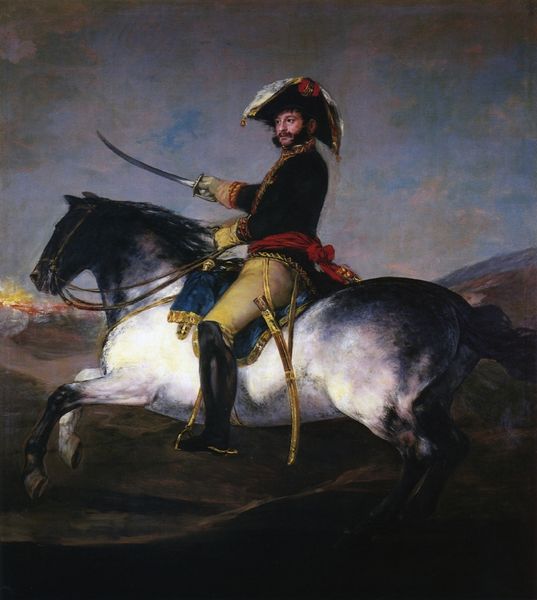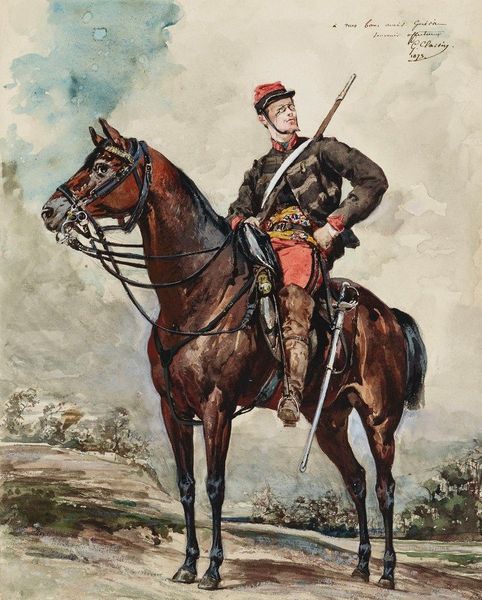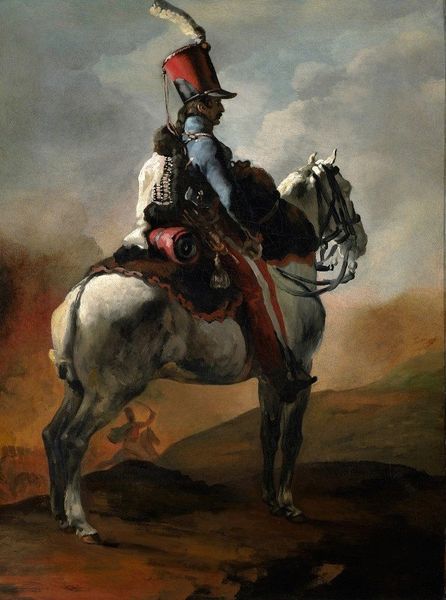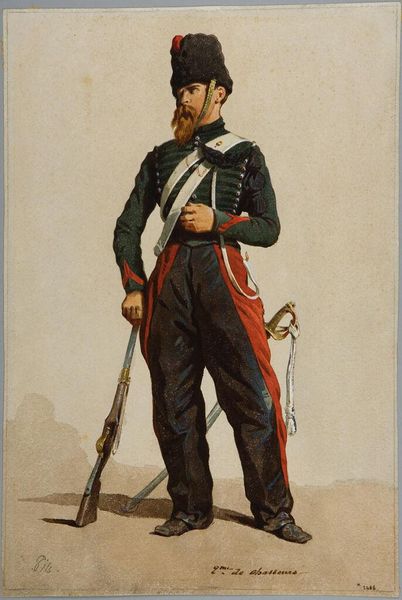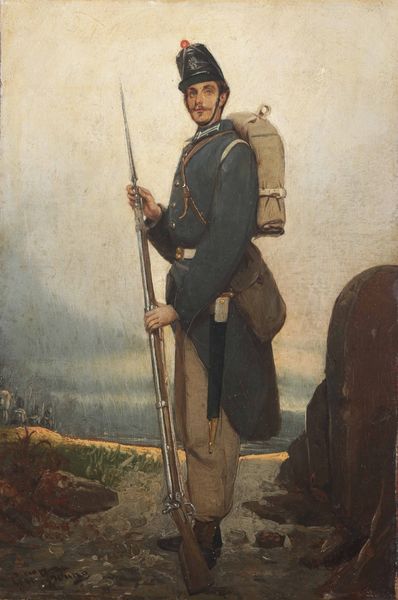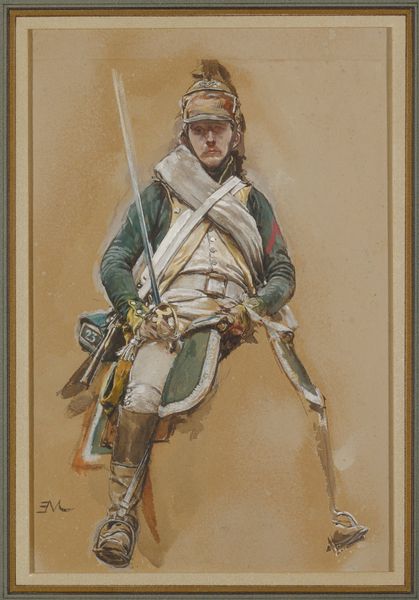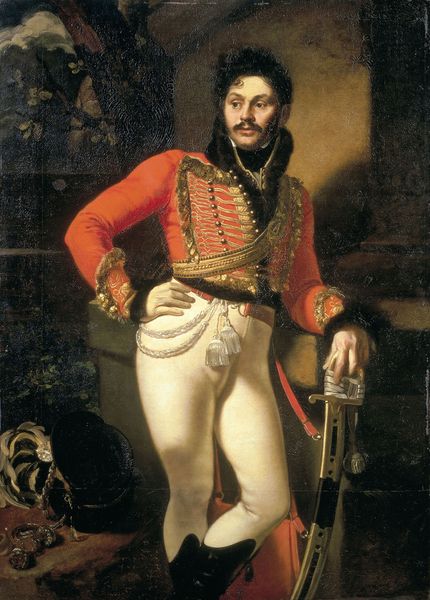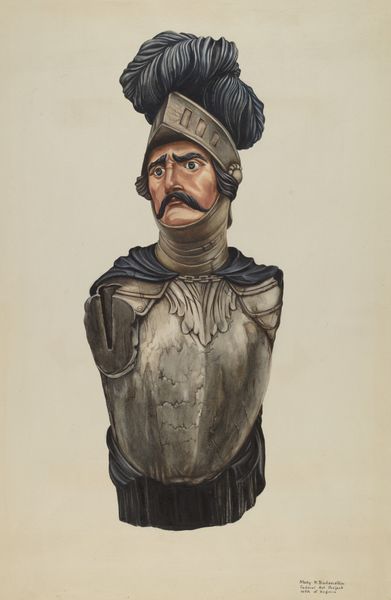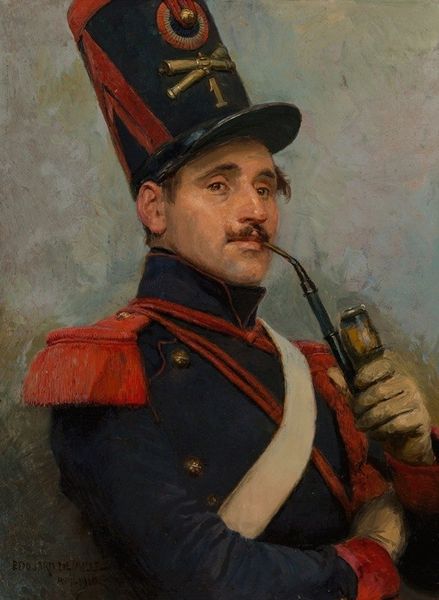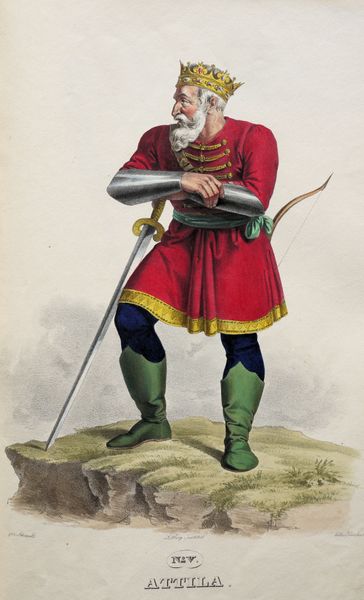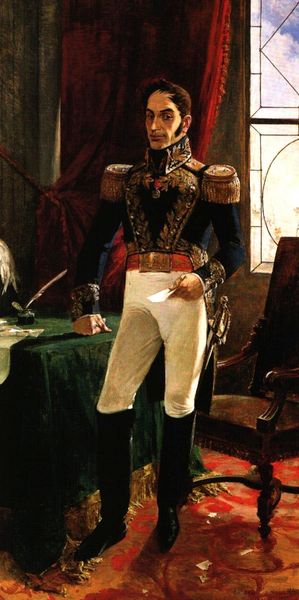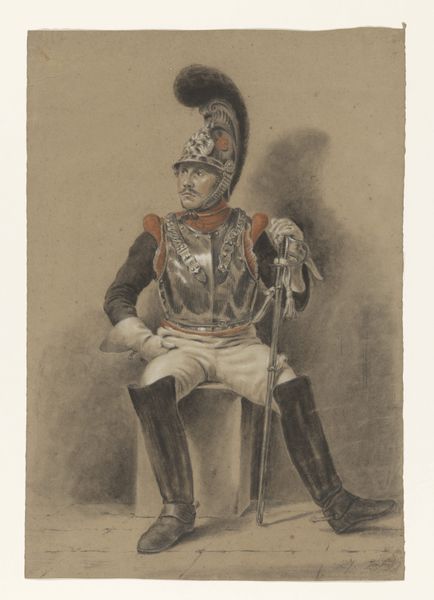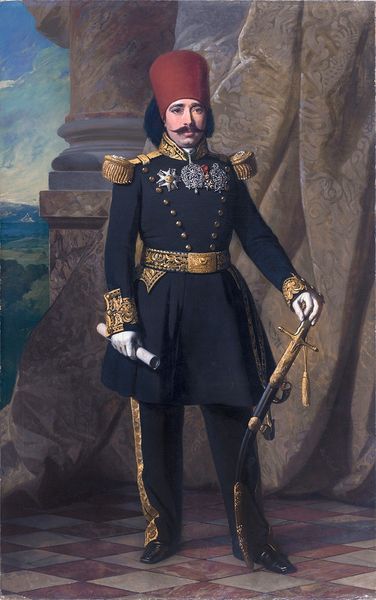
painting, oil-paint
#
portrait
#
narrative-art
#
painting
#
oil-paint
#
figuration
#
oil painting
#
romanticism
#
history-painting
#
academic-art
#
portrait art
#
realism
Copyright: Public domain
Albrecht Adam painted “Soldier at Rest,” in 1830. The painting is divided into two distinct vertical zones: On the left, a wall covered with graffiti, and on the right, a blue mountain landscape. In the center sits a soldier in full regalia. The division creates a striking juxtaposition between the intimate portrait of the soldier and the vast, impersonal landscape. Structurally, the artist juxtaposes the soldier's rigid posture against the soft, natural background. The linear precision of the uniform, with its gold embellishments and structured form, contrasts with the amorphous shapes of the mountains and trees. This contrast invites us to consider the soldier's presence not just as an individual but as a figure embedded within a larger socio-political structure. The painting can be seen as a semiotic text, where the soldier's uniform becomes a signifier of power, duty, and order. Yet, the relaxed pose and the graffiti on the wall—traces of human presence and resistance—introduce elements of uncertainty. This tension between order and disorder, control and freedom, is what makes this painting a compelling visual and intellectual puzzle.
Comments
No comments
Be the first to comment and join the conversation on the ultimate creative platform.
